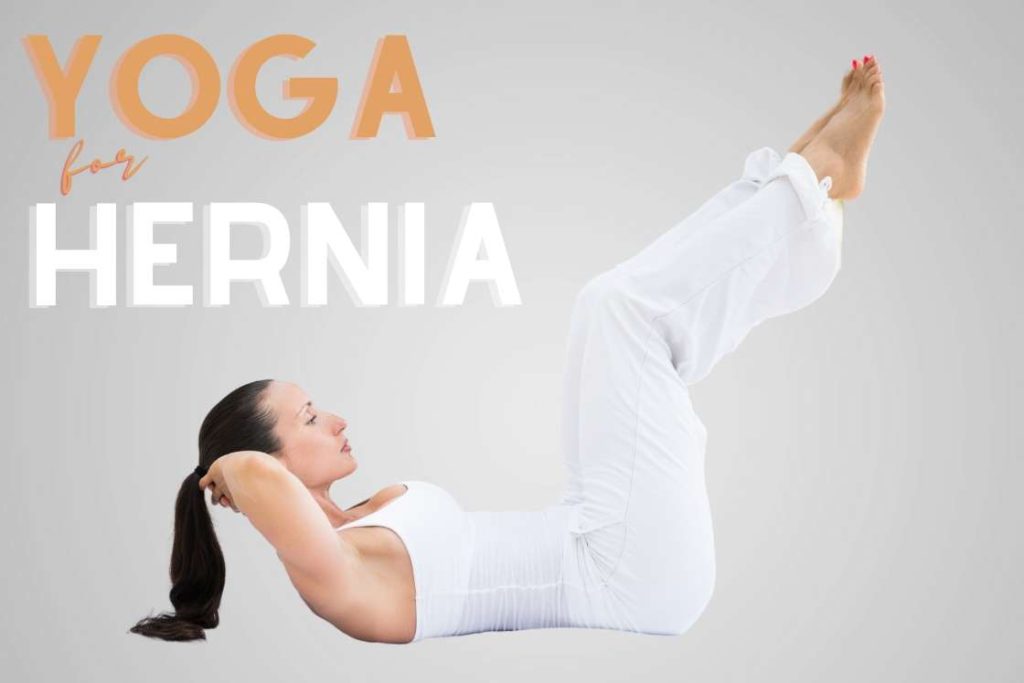
Hernias can be painful and upsetting, often leading people to look for different ways to treat them. While surgery is the usual method for fixing hernias, some people turn to alternative methods like yoga.
Yoga is gentle and helps you become more aware of your body. This can strengthen your muscles and reduce pressure on the hernia. This can lead to better symptom management and overall health improvement. In this article, we will explain what a hernia is, how yoga can help with managing it, and which yoga poses are most suitable for this condition.
Understanding hernia
A hernia happens when an organ or tissue pushes through a weak spot in the muscle or tissue around it. There are different types of hernias:
- Inguinal Hernia: This happens in the groin area.
- Hiatal Hernia: This occurs in the upper stomach, pushing through the diaphragm.
- Umbilical Hernia: This appears near the belly button.
- Incisional Hernia: This develops through a scar from previous surgery.
Common symptoms of a hernia include pain or discomfort, especially when lifting heavy things, straining, or even during everyday activities. Sometimes, hernias can cause more serious problems, like being stuck (incarceration) or having blood supply cut off (strangulation), which need urgent medical care.
How yoga can help with hernia?
Yoga can be a great way to manage hernia symptoms and improve overall health. By focusing on gentle movements, breathing, and being aware of your body, yoga can help ease discomfort and work well with other treatments. Here’s how yoga can be helpful:
- Balancing Prana (Life Force): Yoga helps balance prana, the energy that flows through your body. By doing this, yoga can reduce discomfort and help you feel better, easing the symptoms of a hernia.
- Strengthening Core Energy: Certain yoga poses focus on strengthening the core muscles of your abdomen. This added strength supports and stabilizes the area affected by the hernia, helping to keep your abdominal wall in place.
- Enhancing Body Awareness: Yoga helps you become more aware of your body. This awareness allows you to move carefully and avoid actions that might make the hernia worse.
- Promoting Safe Alignment: Gentle yoga poses help you maintain proper alignment and stability. This reduces unnecessary pressure on the hernia and helps manage symptoms without making things worse.
- Facilitating Pranic Healing: Yoga includes breathing techniques called pranayama. These techniques help distribute energy throughout your body and support the natural healing process.
- Encouraging Relaxation: Yoga’s meditative practices help you relax your mind and body. Reducing stress and relaxing can help ease the pain and discomfort caused by a hernia.
Best yoga poses for hernia
Yoga can be beneficial for managing hernia symptoms by enhancing core strength, increasing flexibility, and reducing pressure on the affected areas. By focusing on specific poses tailored to different hernia types, individuals can experience relief and support. Here are some effective yoga poses for various hernia types:
Yoga poses for inguinal hernia
Inguinal hernias occur in the groin area when part of the intestine bulges through the abdominal wall. Yoga can help by gently strengthening the abdominal muscles and supporting the groin.
1. Cat-Cow pose (Marjaryasana-Bitilasana)
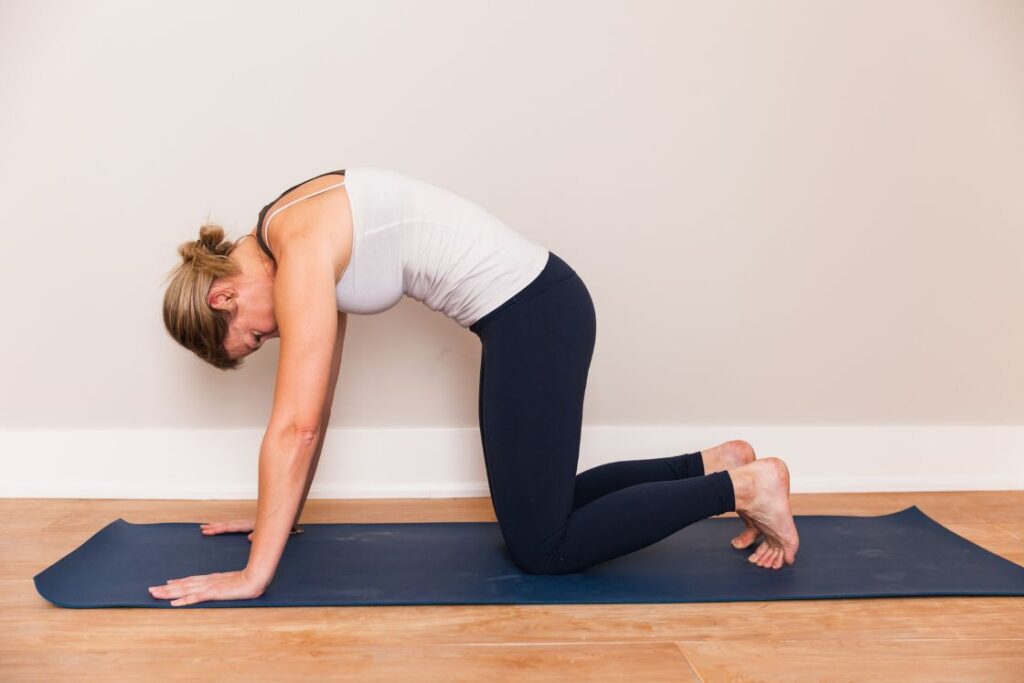
This pose stretches and strengthens the abdominal muscles gently. It can improve muscle support around the hernia and help with stability in the area.
Steps:
- Get on your hands and knees on the floor.
- Inhale and arch your back (Cow Pose).
- Exhale and round your back (Cat Pose).
- Repeat this sequence for 10-15 breaths.
2. Bridge pose (Setu Bandhasana)
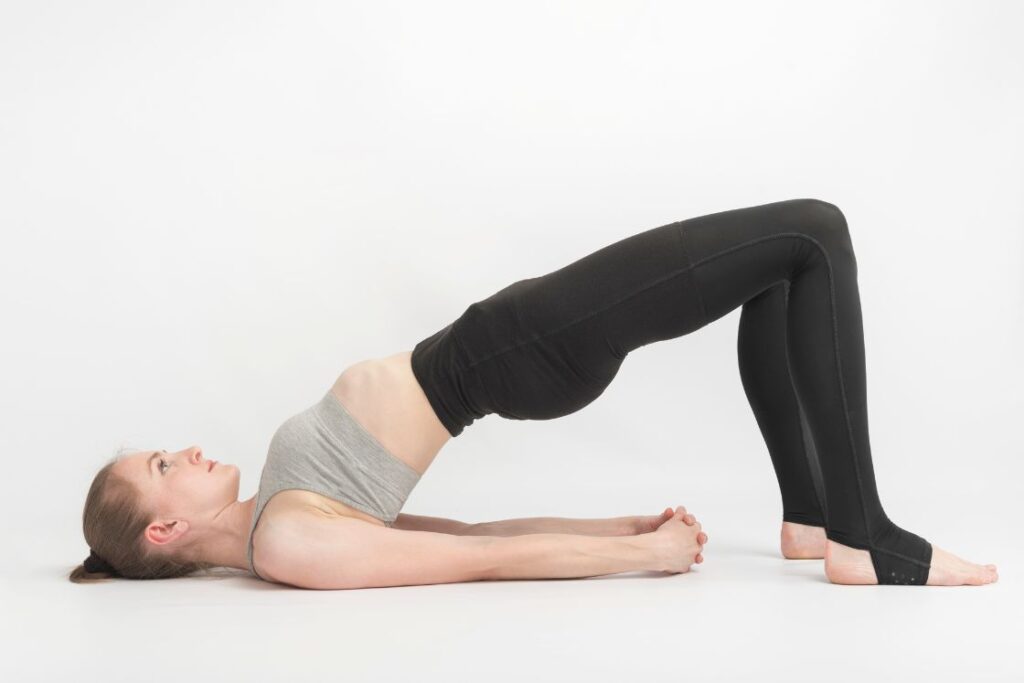
This pose strengthens the pelvic floor and the muscles in the lower abdomen. It provides support to the groin area and helps to stabilize the muscles around the hernia.
- Lie on your back with your knees bent and feet flat on the floor.
- Lift your hips towards the ceiling.
- Hold the position for 15-30 seconds, then lower your hips back down.
- Repeat this 5 times.
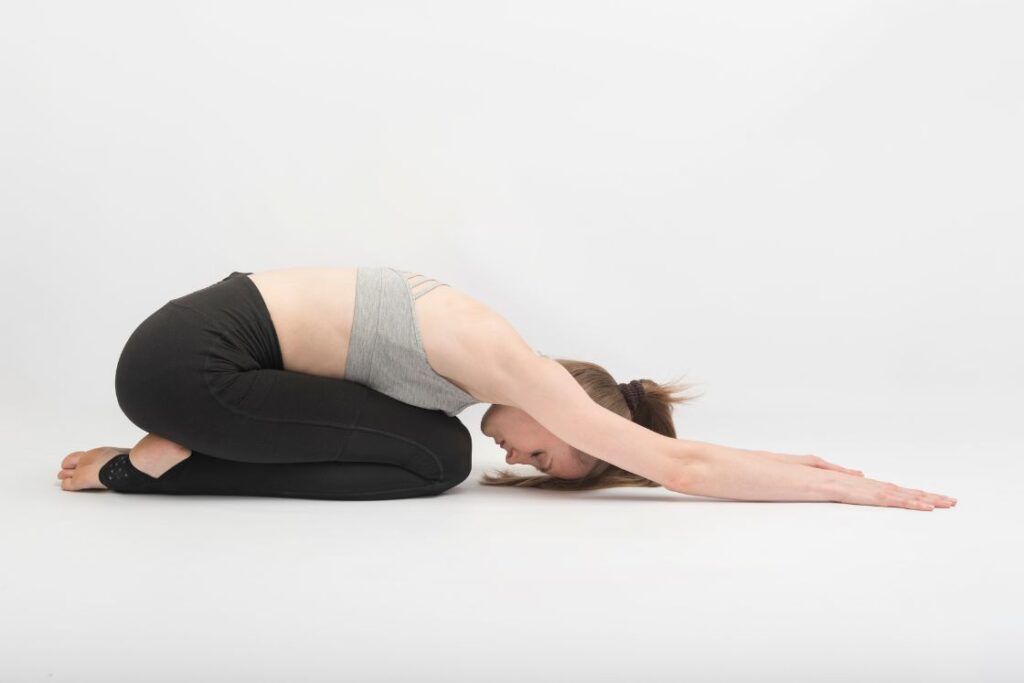
This gentle pose stretches the back and relieves pressure on the chest and stomach. It can help reduce symptoms like heartburn and discomfort.
Steps:
- Kneel on the floor with your big toes touching and knees apart.
- Sit back on your heels and stretch your arms forward.
- Lower your forehead to the ground and hold for 1-2 minutes.
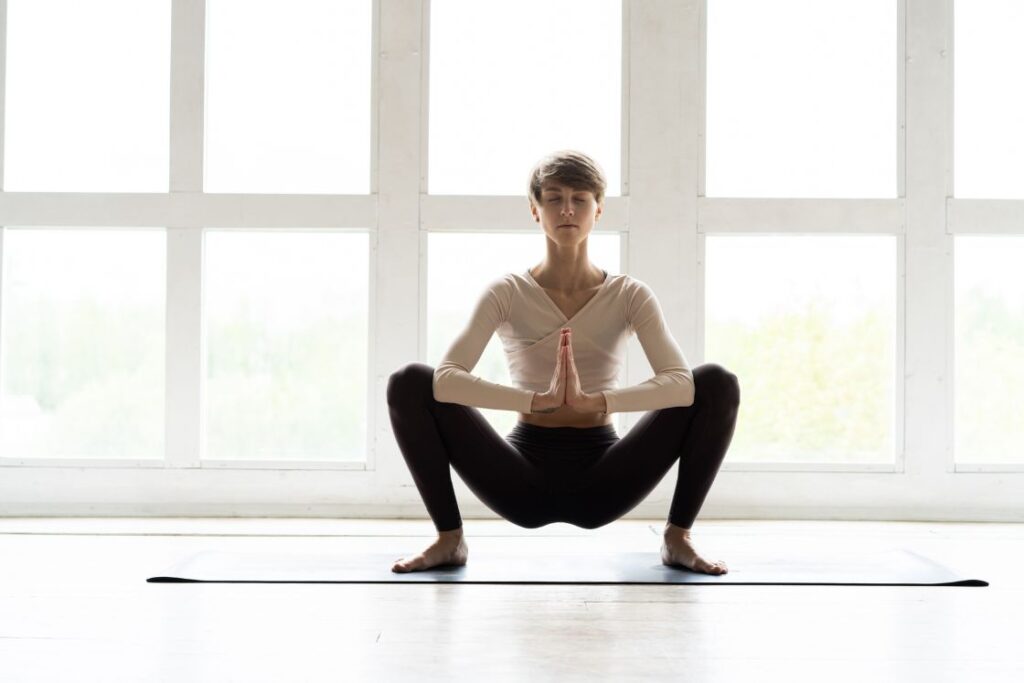
Malasana addresses the final piece of the puzzle, in the case of an inguinal hernia. This pose strengthens your kegel floor for better support to the abdominal region. Practicing it will ensure that you don’t face conditions like a hernia in the future.
- Stand straight with legs hip-width apart.
- Keep your upper body and head straight, with shoulders open.
- Spread feet about a foot apart and rotate them outward by 45 degrees.
- Lean forward from your hips while keeping your spine and head straight.
- Begin to squat down, letting your knees point outward.
- Use a wall or support to help manage pressure as you squat.
- Continue lowering until you reach a full squat.
- Ensure the distance between feet is comfortable for your ankles and toes.
- Keep your abdominal muscles relaxed.
- Place hands on your knees or fold them in a Namaste mudra.Hold the pose for about 2 minutes and do not repeat.
Yoga poses for hiatal hernia
For hiatal hernia, yoga poses that include cardiovascular stretches, gastrointestinal stretches, and upper abdominal stretches are beneficial.
Hiatal hernia happens when the stomach pushes through the diaphragm into the chest. Unlike other hernias that push downward or sideways, this type moves upward. Inversion poses, which are helpful for other hernia types, can worsen hiatal hernia.
Since hiatal hernia can cause acid reflux, focus on poses that help with this issue. Along with specific yoga poses, try Pawanmuktasana to relieve GERD symptoms. Avoid using these poses for other hernia types, as they may not be suitable.
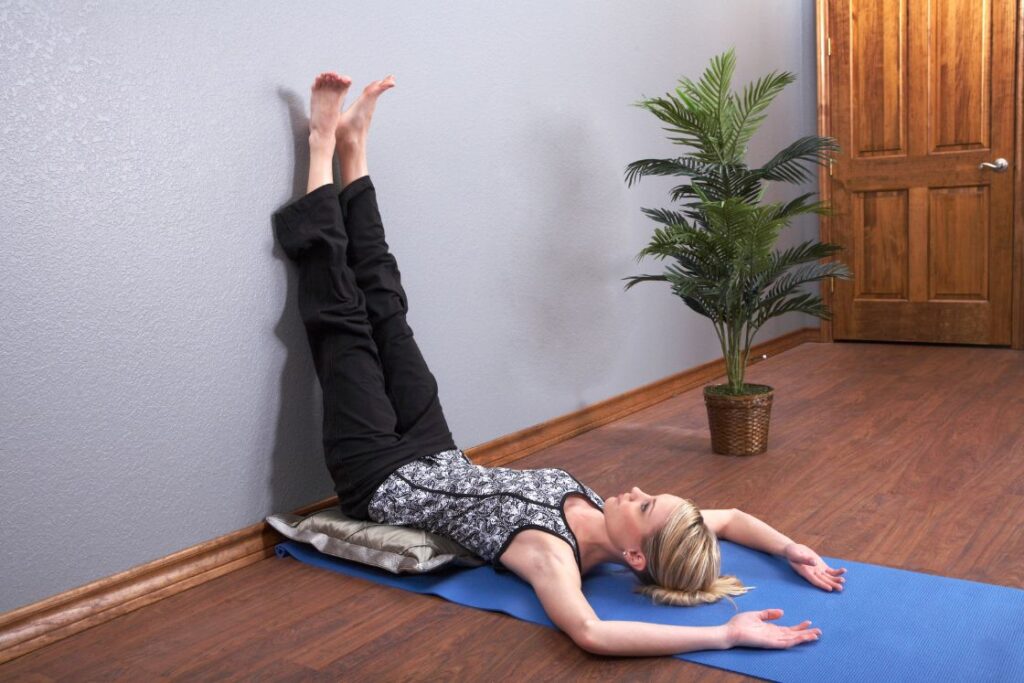
This pose helps gently pull the bulging area back into place and reduces pressure on the hernia. By elevating the legs, it encourages the organs to move away from the hernia site.
Steps:
- Sit next to a wall with your legs stretched out in front of you.
- Lie back and raise your legs up the wall.
- Relax your arms by your sides and hold this position for 5-10 minutes.
2. Spinal twist pose (Ardha matsyendrasana)
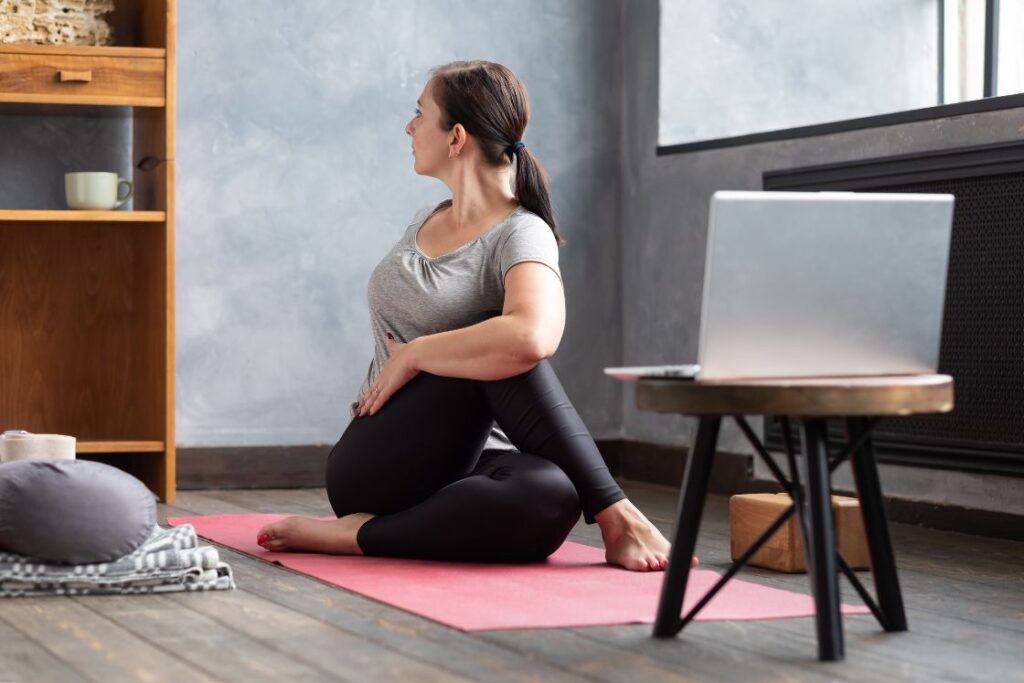
This pose stretches and relaxes the upper abdomen, aiding digestion and reducing discomfort associated with hiatal hernia.
Steps:
- Sit with your legs extended.
- Bend your right knee and place your foot outside your left thigh.
- Inhale and lengthen your spine.
- Exhale and twist your torso to the right.
- Hold for 20-30 seconds, then switch sides.
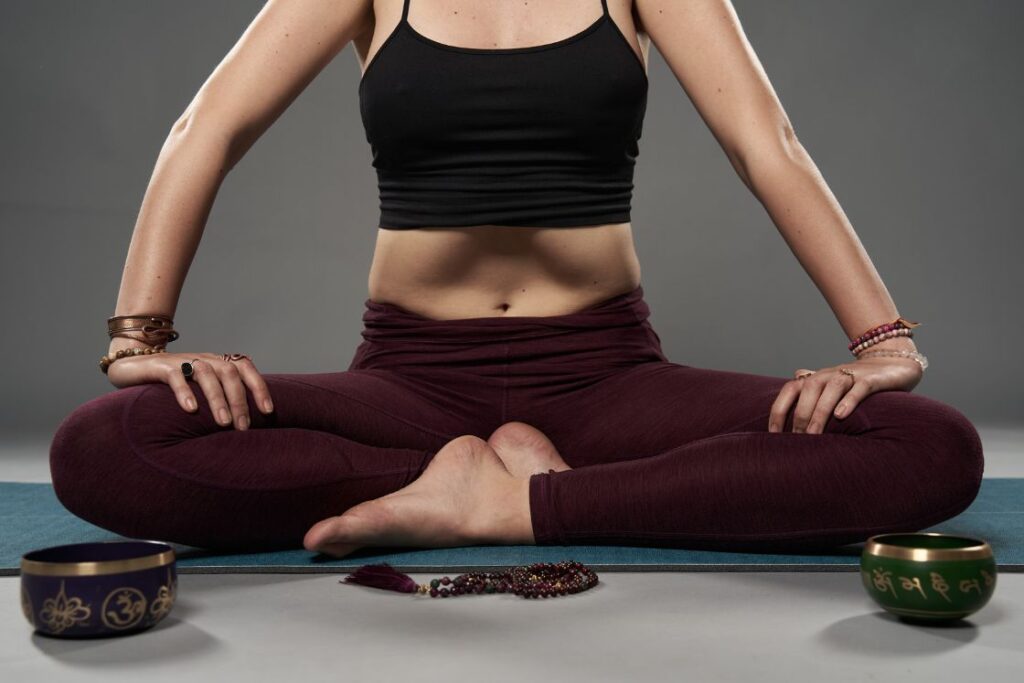
The final exercise that you need to address for hiatal hernia is going to be the strengthening of your diaphragm. The sharp exhalation technique of Kapalabhati swiftly stretches and compresses your diaphragm, giving them the much needed strengthening exercise.
Steps
- Sit in an easy pose, or any other comfortable or meditative cross-legged pose.
- Open your shoulder blades, keep your spine and head straight.
- Keep your hands on your knees.
- Take a deep breath in, place your right hand on your stomach to feel the movement and make 20 successive short bursts of exhalation spurts.
- Make a contraction of your abdominal muscles to make the exhalation spurts.
Note – you need not worry about the inhalation, as your abdominal muscles relax -the inhalation will happen automatically.
Yoga poses for umbilical hernia
Umbilical hernia occurs when part of the intestine pushes through a weak spot in the abdominal wall near the belly button. Yoga poses that focus on gentle abdominal strengthening and support can be beneficial. Here are some effective poses.
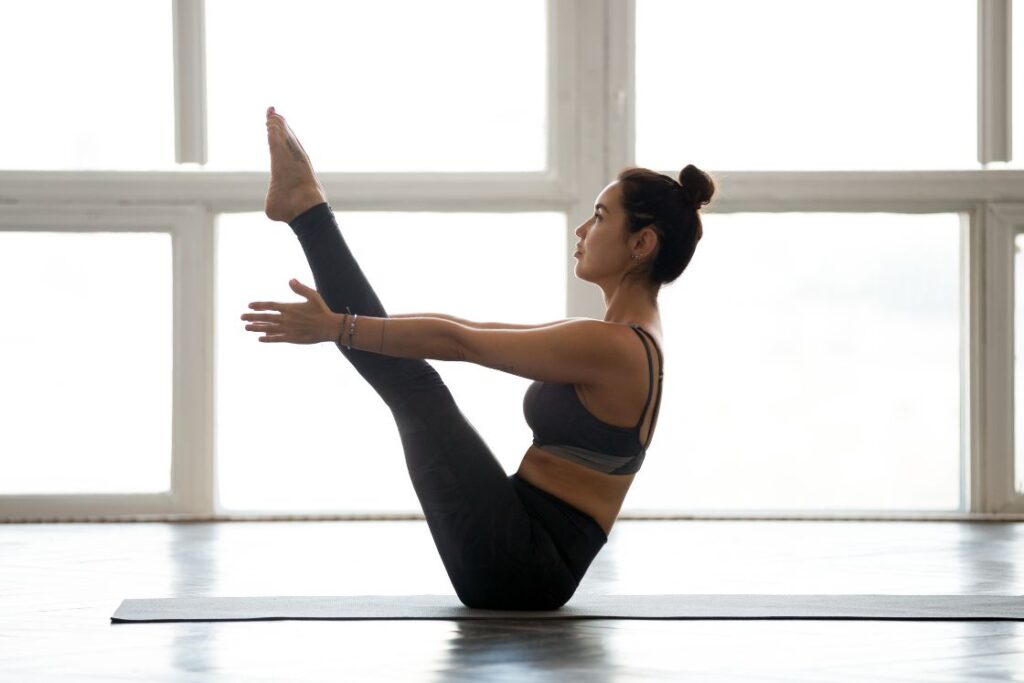
Navasana, or Boat Pose, is highly effective for umbilical hernia. It focuses on strengthening the core without putting excess strain on the abdomen, helping to prevent future protrusions.
Steps
- Sit straight with legs extended in front.
- Bend knees, bringing them closer with feet on the ground.
- Lean back slightly, keeping the upper body firm.
- Support thighs with hands and lift feet off the ground.
- Raise legs until they clear the floor.
- If comfortable, remove hand support to deepen the pose.
- Hold for 5 breaths, then release.Aim for 3 repetitions.
2. Gentle pelvic tilts
This pose helps engage and strengthen the lower abdominal muscles, which can support the hernia site and reduce discomfort.
Steps:
- Lie on your back with your knees bent and feet flat on the floor.
- Flatten your lower back against the floor by gently tilting your pelvis upward.
- Hold the position for a few seconds, then release.
- Repeat 10-15 times.
Other effective exercises for hernia
1. The warm water fix
The first thing you need to focus on is bringing down your stomach to its normal position. This fix uses the simplicity of weighing down your stomach by filling it up with warm water, accompanying it with downward pull by jumping on your toes.
This exercise won’t make any changes overnight, but as you do this daily your stomach will begin to slide back to its normal position. The warm water will also help you with digestive issues and bowel movement issues that are usually associated with hiatal hernia.
Steps
- As soon as you wake up, drink 300 ml of Luke warm water. Which is more or less a full standard size glass.
- Stand up and stretch your hands sideways horizontally. Now bend your elbows, fold your arms, and bring back your hands to touch your chest. The purpose of this is to open up your diaphragm.
- Now rise up on the ball of your toes and swiftly drop down on your heels.
- Repeat this number of times, you can go up to 50.
- Now put your hands up, open your mouth and breathe consciously for 15 seconds. The breathing will help with the closing of the diaphragm
Note – While dropping on your heels don’t just leave your weight on the fall, hold it till your toes touch the ground. Otherwise, repeated rough impacts could scar your abdominal muscles.
2. Abdominal sit up
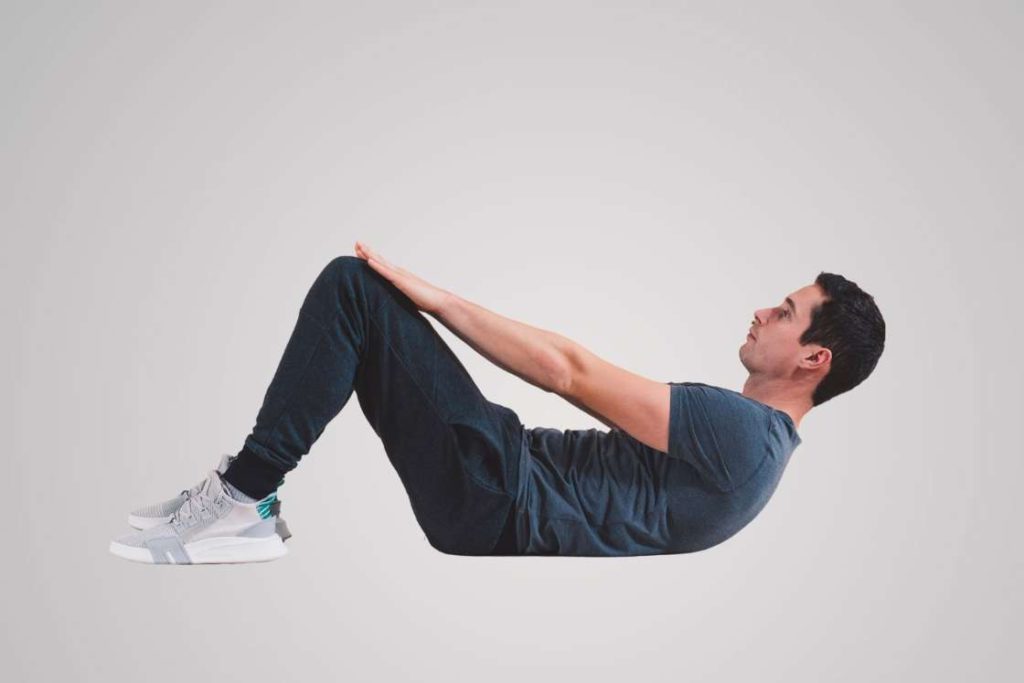
The abdominal sit up is very much like the traditional crunch. However, this will focus less on reducing your fat and fleshing out your abs, and more on building the core strength of your abdominal muscles and chest muscles. The movement of the abdominal sit up will also help you push down your stomach from your chest region.
Steps
- Lie back flat on your back, on the ground.
- Bend your knee and place your feet on the ground, as you would in case of crunches.
- Now with slight contraction of your abdominal muscles, pull up your upper body towards your knee -as you would in case of crunches.
- However, unlike crunches you won’t attempt to reach upto your knees. You just need to lift up your shoulders off the ground.
- Hold the tension in your abdomen for a few seconds and lie back.
- Do 10 repetitions of this exercise.
Note – while sitting up, do not take any support, especially not with your hands. Let your abdomen do all the work.
3. Cycling in the air
In umbilical hernia the intestine tends to protrude outwards towards the belly button. This means the weak spot occurs at the very centre of your tummy. To resolve this issue you will need to pursue exercises that build up inwards tension in the centre of your abdomen and contain it in the region as well. The cycling in the air does just the job.
Steps
- Lie on a slightly sliding surface, for example, a slant board. Put your head at the lower level and your legs at the upper.
- Now shadow pedal with your legs.
- Hold the ground at your sides with your hands for support.
- Do this exercise for a minute, and then relax.
Note – Pedal steadily. Remember there is no maximum count you need to reach. This exercise is about steadily holding the pressure created by the pedalling leg movement within your belly button region.
Which yoga poses should you avoid with hernia?
If you have a hernia, avoid poses like Headstands, Forward Bends, and Twists. These poses can increase abdominal pressure and strain the hernia, potentially worsening your condition.
- Inversions (e.g., Headstand, Shoulder stand): Increase abdominal pressure and strain the hernia area.
- Full Forward Bends (e.g., Standing Forward Bend, Seated Forward Bend): Apply pressure on the abdomen, potentially worsening the hernia.
- Intense Twists (e.g., Revolved Triangle Pose, Twisted Chair Pose): Strain the abdominal wall and may cause discomfort.
- Deep Backbends (e.g., Wheel Pose, Camel Pose): Stretch and pressure the abdominal area, which can exacerbate symptoms.
- Strong Core Exercises (e.g., Plank Pose, Boat Pose): Intensely engage the core, potentially straining the hernia.
Conclusion
In conclusion, yoga can help manage hernia symptoms and improve overall health. Gentle poses and breathing exercises can strengthen the abdomen, increase body awareness, and reduce discomfort. It’s important to be careful and avoid poses that put too much pressure on the hernia. Always talk to a healthcare professional and follow a qualified yoga teacher’s advice to make sure the exercises are safe. With the right yoga practices, people with hernias can support their healing and work well with other treatments.
Yoga can aid in hernia recovery by improving core strength and flexibility, but it should be done under medical supervision.
Gentle poses like Cat-Cow, Child’s Pose, and Legs-Up-the-Wall are generally safe. Always consult with a healthcare provider.
Avoid poses that increase abdominal pressure, such as wheel pose, plank pose or Crunches.
Aim for 2-3 times a week, but listen to your body and adjust based on comfort and progress.
Pranayama techniques such as diaphragmatic breathing and Anulom Vilom (alternate nostril breathing) are recommended as they help reduce stress and improve core stability.
Yes, mudras like Shakti Mudra can help by balancing energy and supporting digestive health, which may provide relief from hernia symptoms.
Yoga can complement other treatments, such as physical therapy or surgery, but it should be part of a comprehensive treatment plan advised by your healthcare provider.

